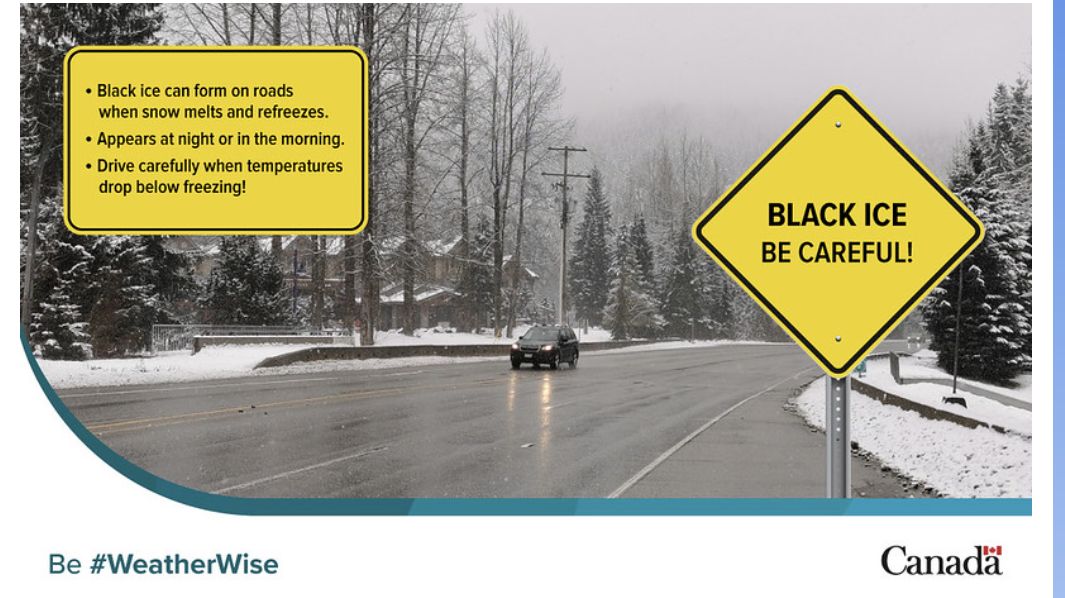**** Info via Environment Canada
Beware of flash freeze!
Flash Freeze and Black Ice
When the temperature falls rapidly below 0 °C, anything wet on the ground will freeze. We call it a flash freeze. It’s as simple as it sounds: a flash freeze creates a thin coat of highly transparent ice that blends in with the colour of the road pavement, and often times, it’s referred to as black ice. Flash freeze and black ice bring dangerous driving conditions and can cause major accidents on roadways in an instant.
Flash freeze warning
We issue a flash freeze warning when we expect significant ice to form on roads, sidewalks or other surfaces due to a rapid temperature drop.
Imagine a weak warm front passing through, bringing 5 mm of rain and 3 °C temperatures in the afternoon. A fast-moving cold front follows the rain in the evening, dropping the temperature to -5 °C overnight, meaning that wet roads will quickly freeze.
This can also happen from snowmelt, particularly in the spring. When afternoon temperatures warm up with the increase of daylight, the snow gradually melts in the late afternoon, only to freeze over at night. Black ice can also form if moisture in the air condenses and forms dew or fog, then freezes with temperatures dropping below 0 °C.
Black ice is dangerous! Don’t be caught off guard:
- Know the forecast. Understand the temperature before you head out, and know if there is a risk of black ice.
- Install proper tires. While a total sheet of black ice can make any traction nearly impossible, winter tires are better equipped to handle ice.
- Watch for “wet” roads. When driving in below-freezing temperatures, know that a road that looks “wet” could be black ice.
Remember that bridges and overpasses freeze before other surfaces and slow down when you use them. Follow these winter driving tips and monitor our latest forecasts and alerts before heading out.
This road sign about freezing roads can often be seen in valleys and before bridges as a reminder to be careful and slow down.




